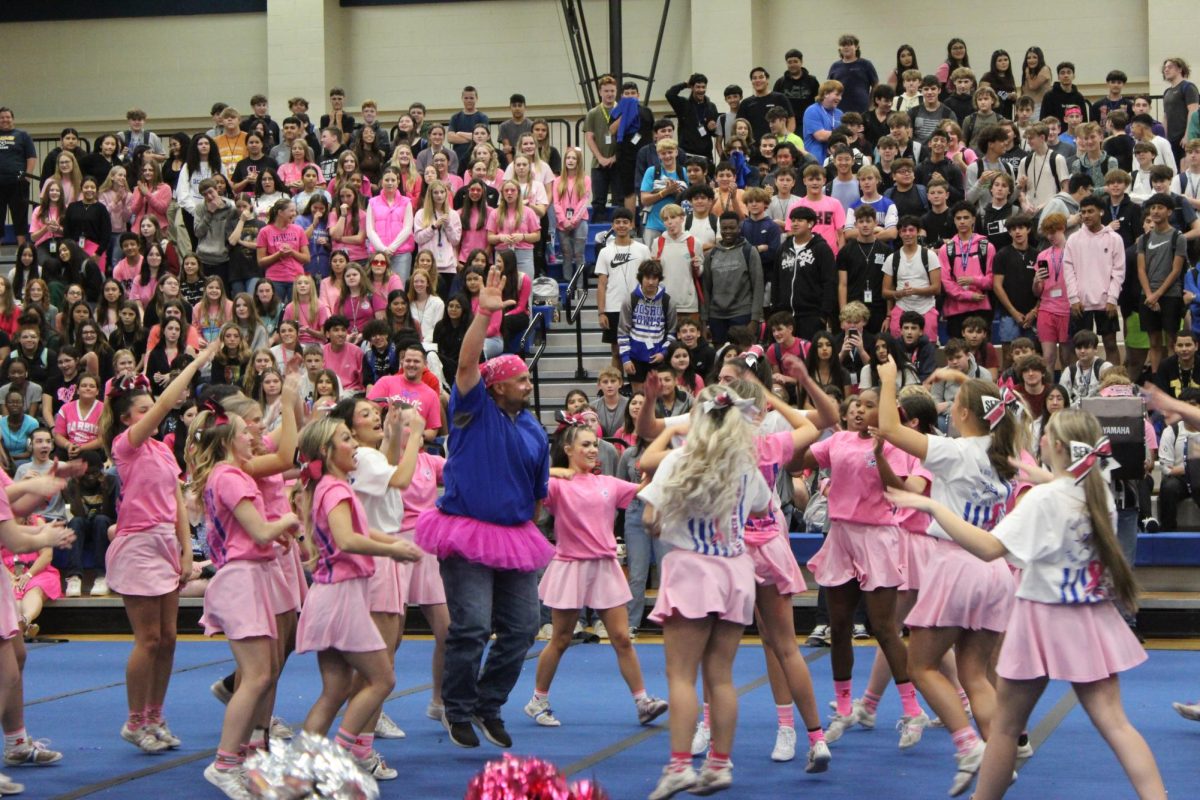High school is not just a place of education; it’s a melting pot of styles, trends and social dynamics. Each hallway becomes a runway, showcasing the diversity and individuality of students’ fashion choices. From preppy to punk, and everything in between, high school styles reflect personal identity, peer influence and societal norms.
“I [wear] casual streetwear, I love baggy style and clothes that are trendy. I’m not really insecure about my body, but wearing baggy is so comfortable, especially in school and I’m just not really a girl who likes dresses,” junior Laura Hapke said. “For me personally shoes are very important. I could buy a new pair every week if I had the money. I get a lot of my inspiration from social media and Pinterest.”

At the heart of high school fashion lies the desire to belong—the need to fit in drives students to adopt certain styles, aligning themselves with specific social cliques. The jocks sport their letterman jackets with pride, while the cheerleaders don their uniforms as symbols of unity and spirit. The nerds might opt for glasses and suspenders, signaling their dedication to academics, while the rebels defy norms with leather jackets and ripped jeans. Each clique creates its fashion subculture, with unwritten rules dictating acceptable attire.
“Style is a a person’s preference towards certain clothes and aesthetic. It is essential to a person’s identity because it is how one presents themself to society,” senior Nickolas Smith said. “A right style is important because it expresses the inner self on the outside.”
The popular kids set the trends, effortlessly blending style and influence. Their fashion choices carry weight, dictating what’s cool and what’s passé. For some students, conforming to these trends is a means of gaining acceptance and validation. They meticulously curate their wardrobes, hoping to earn a coveted spot within the social hierarchy. Yet, others rebel against the mainstream, forging their paths with unconventional styles that challenge the status quo.
“I think I do fit in because I see a lot of people wearing casual clothing,” Smith said. “Nobody wears anything too extravagant at Joshua because of our dress code policy.”
Things would get pretty interesting in an ideal world where high schoolers could wear whatever they wanted without worrying about what others think. Just picture students rocking clothes straight out of their wildest dreams. One might wear a starry cloak, feeling like they’re exploring the cosmos. Another might mix old-fashioned Victorian with futuristic gadgets, creating a cool steampunk look. It’d be a world where everyone’s outfit tells a story and shows off their unique style, without anyone judging.
“I would love to dress back how I used to in freshman year and early sophomore year. I wore baggy jeans with prints and patches,” junior Diego Ramirez Montoya said. “I used to be really bold with what I wore. I think I drew a lot of attention to myself, which is why now I know all kinds of people.”
Beyond the superficial, high school styles serve as a form of self-expression and empowerment. They allow students to assert their identity, communicate their interests and find their tribe amidst the chaos of adolescence. Whether it’s embracing vintage fashion, experimenting with gender-neutral clothing, or showcasing cultural heritage through traditional attire, fashion becomes a tool for self-discovery and personal growth.
“I kind of want to get more into baggy or Stockholm which is a completely different vibe but I really want to try out new things like more colors or pieces that make the outfit unique,” Hapke said. “And more jewelry.”
However, the pursuit of belonging can also breed conformity and exclusion. Those who don’t adhere to the prevailing norms may find themselves ostracized or marginalized. The pressure to fit in can suffocate, leading some students to sacrifice their authenticity in favor of social acceptance. Yet, it’s important to remember that true style transcends trends and cliques. It’s about embracing individuality, celebrating diversity and fostering inclusivity within the high school community.
“Expressing yourself with clothes, you can read so much about a person in their style,” Hapke said. “I think it’s important to find yourself and your style and try out new things until you figure out how you want to identify yourself. And I think style is a form of art, creating color schemes and different shapes.”
In high school, there’s room for everyone to shine. Whether you’re a trendsetter, a trend follower, or a trend defier, your fashion choices are a canvas for self-expression. So, wear your uniqueness with pride and remember that the most stylish thing you can be is yourself.
“Wear what you want; people will always say things, but once you start and keep going you will realize it does not matter what others have to say, because who are they to critique you,” Ramirez said. “Do not let style stress you out; be comfortable with dressing comfortable and casual.”


























